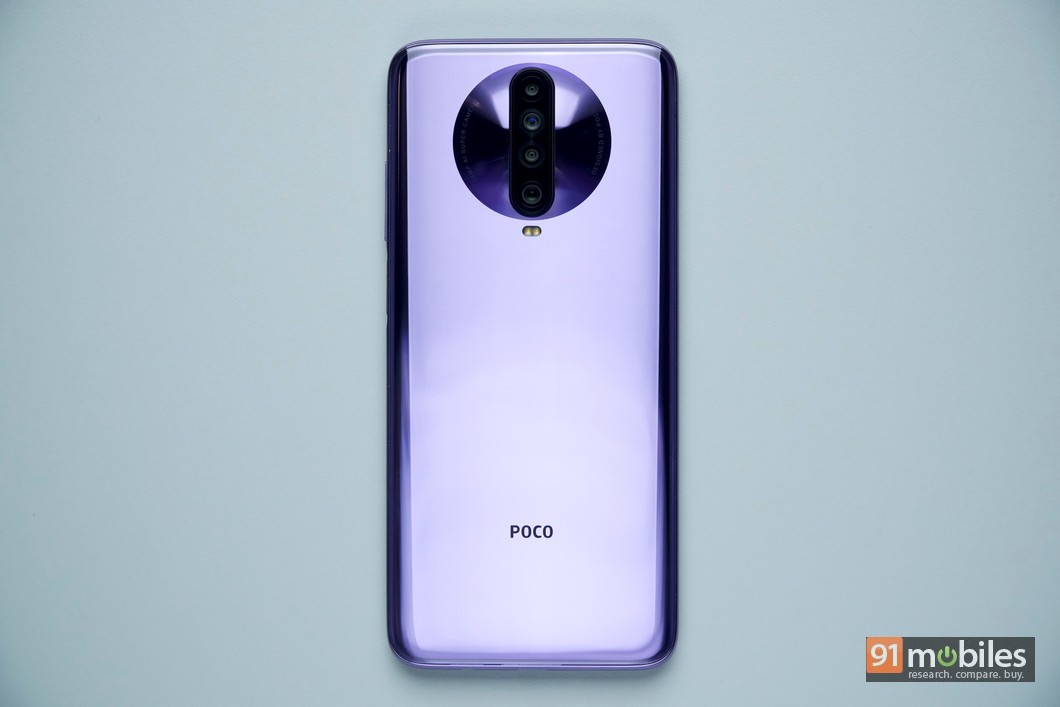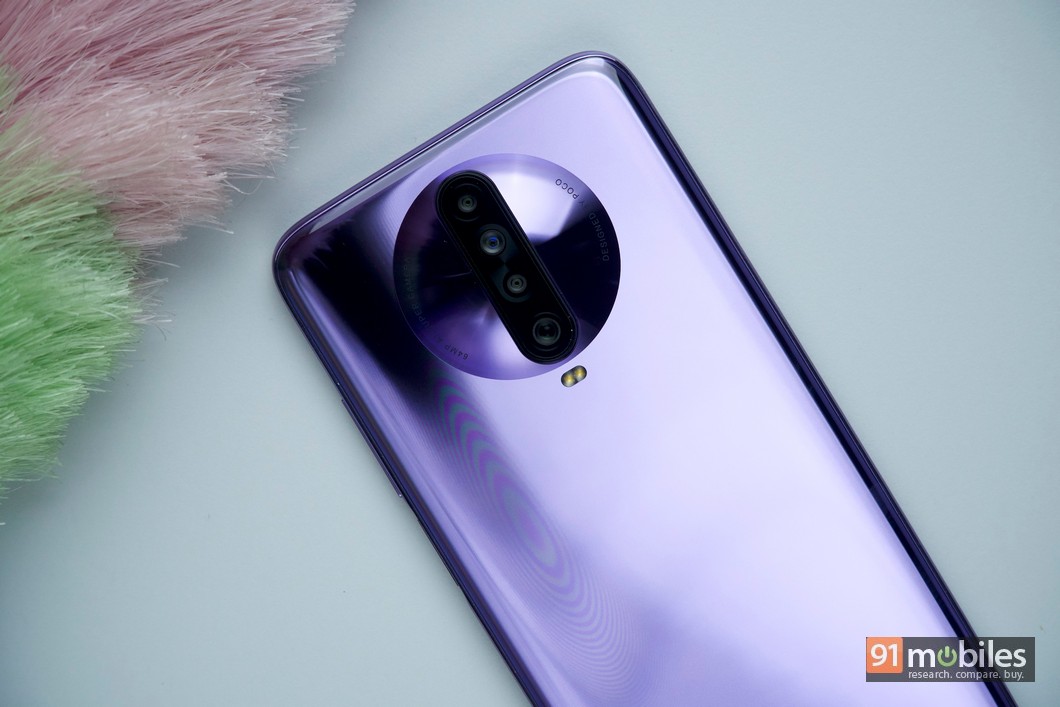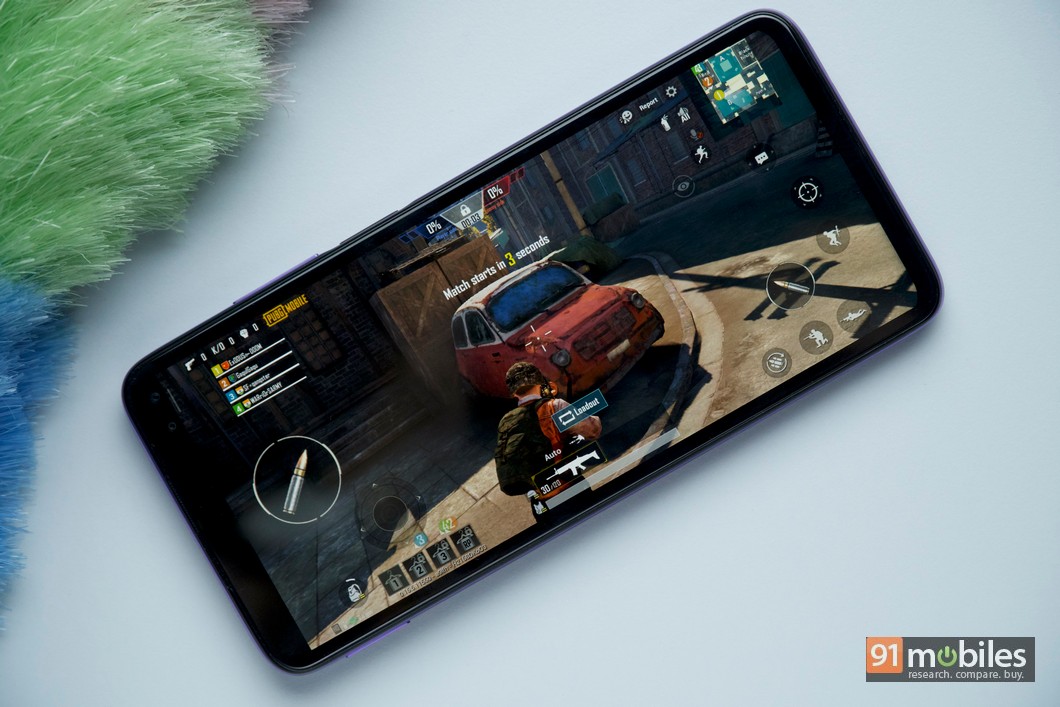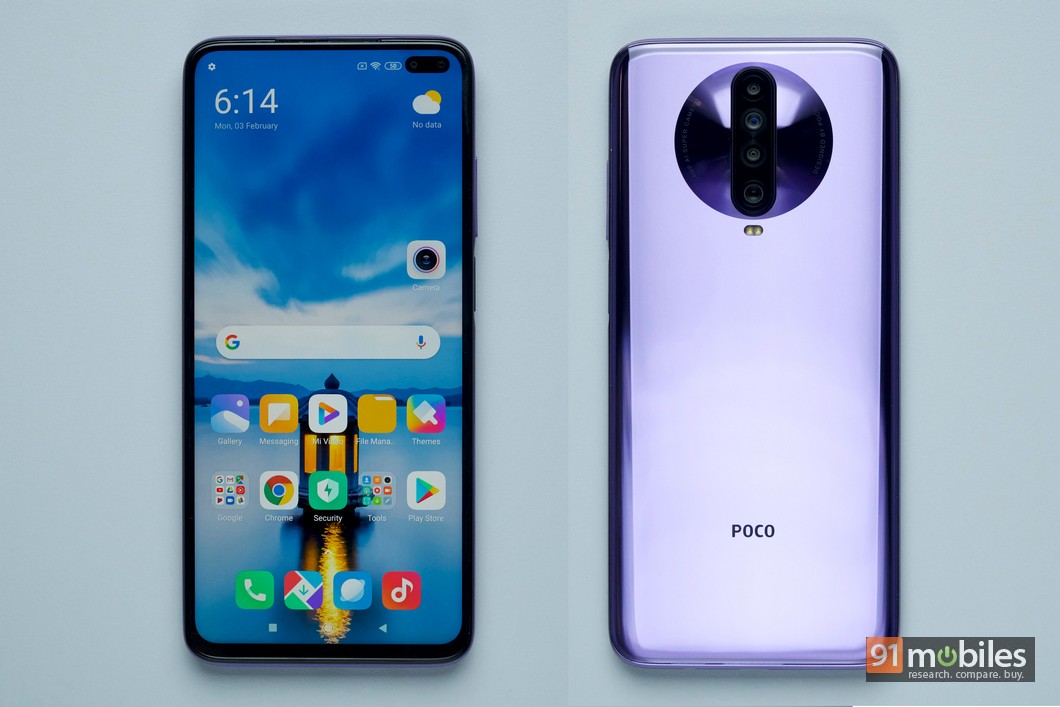The POCO F1 (review), announced back in 2018, was a smartphone that had redefined the meaning of the phrase affordable flagship, or for that matter even value-for-money. It was a device etched in memory, not for any visually appealing quality, but for the powerful hardware offered for an extremely affordable price. Flagship-level specs and more than decent camera performance was something that was unheard of at the below Rs 20,000 price point till the POCO F1 dropped, and till now several companies are trying to emulate the success of the device, albeit not successfully.

As such, the launch of a second breakthrough device from the former Xiaomi sub-brand was inevitable and rumours had started swirling last month of a possible product launch in February. The most obvious assumption was that a sequel to the POCO F1 was in the works and it would likely be called the POCO F2. However, the company, which has cultivated a large fan-following over the last two years, announced that its next product will be called the POCO X2. To be clear, there was never any POCO X1.

Announced at a starting price of Rs 15,999, the POCO X2 is definitely the most affordable phone the company has to offer. It may not offer flagship-grade performance but it excels in another area which is again unheard of in its price range. Screen refresh rate. The POCO X2 happens to be the only phone under Rs 20,000 with a mind-boggling 120Hz refresh rate display. But how good is this display? Is a 120Hz display really something that users want? Does the performance of the phone compliment this high refresh rate? How good are the cameras? The questions are many and I believe I might have the answers to the most important ones. Read on to find out.

- No application fee
- No down payment required
- No pre-closure fee
Verdict
The POCO X2 breaks smartphone boundaries once again with its mind-boggling 120Hz display at such an affordable price point. Combined that with significantly good internals, customisable software and a camera to match, the POCO X2 is my number one recommendation for a smartphone in the mid-range category.
Design and build

On the face of it, POCO is a former Xiaomi sub-brand but no matter how much the company wants to carve out an independent identity, the POCO X2 still gets its design cues from Xiaomi. You might have heard of the Redmi K30 being launched in China and the POCO X2 is pretty much the same device. A curved Corning Gorilla Glass 5 back adorns the back of the POCO X2 covering the breathtaking Purple colour design and the textured circular pattern around the camera housing. The curve on the sides means that this is a phone which is easy to grip but the slippery design slightly negates this advantage. The quad lenses themselves are arranged vertically along with the LED flash and the POCO branding is prominent at the bottom. It is quite clear to me that I’ve never held a more premium feeling device in the sub-20,000 category. Props to POCO for considering a flashier design for its new phone as the POCO F1 was anything but flashy. However, the POCO X2 is not exactly light at 208g and I had problems in operating the device with one hand.

The top of the phone comes with an IR blaster to turn your POCO X2 into a universal remote, a feature quite standard in Xiaomi phones and was also present on the POCO F1. At the bottom, a Type-C port is present along with a headphone jack and a speaker grill. The X2’s left side has the capacitive fingerprint reader which doubles up as the power button and above it are the tactile volume rocker buttons. The reasoning for not including an in-display fingerprint sensor, which has become a novelty on many mid-range smartphones, was quite simple: the technology requires an OLED display which will drive the cost high and that is not what the POCO brand is about. Add to that the necessity of a 120Hz refresh rate and you can see why POCO opted for an LCD panel. On the right of the phone is the hybrid SIM slot which supports a microSD cards up to 512GB.
A ‘refresh’-ing display

The highlighting feature on the POCO X2 is the display, or more accurately how many times it refreshes in a second. Let’s refresh (pun intended) our minds to when OnePlus brought in the high refresh trend to mainstream smartphones with its OnePlus 7 Pro (review) and its fluid 90Hz display. As it became my primary phone, the difference in the perceived speed was very apparent and very easy on the eye. The Razer Phone had earlier been the first phone with a 120Hz refresh rate, and later ASUS introduced it in the ROG Phone 2. Now the technology has trickled down to budget/mid-range phones.

Talking about the display as a whole, you can clearly see the inspiration from the Redmi K30. A double punch-hole display is present on the top-right of the POCO X2 which is reminiscent of the Galaxy S10 Plus (review). It falls down to a matter of opinion but I feel that punch holes are much less obtrusive than teardrop notches and more convenient than pop-out mechanisms. The screen is 6.67-inch in size, has FHD+ resolution, an aspect ratio of 20:9 and as mentioned above, is an IPS LCD panel. Consequently, there is some backlight bleeding surrounding the punch-hole cameras which is visible when you look at from a certain angle. Overall as far as viewing is considered, I was impressed with the colour accuracy and brightness levels on the device. A side-by-side comparison with the Realme X2 (review) showed that POCO X2 had slightly dull reds and yellows as compared to its Realme rival but only when observed quite minutely. On a side note, the POCO phone also comes with Widevine L1 certification, a feature not present on the POCO F1 at launch time, thus allowing you to view HD content on Netflix, Prime Video and more.

The talking point is how infinitely smooth the display feels as compared to…. well any smartphone in its price range. There is a certain fluidity in the animations, scrolling, browsing and navigating in general which gives the impression of a faster phone. There is the option of reducing the refresh rate to 60Hz for conserving battery, but in my opinion, the charm of the phone is lost. Unlike the Pixel 4’s variable 90Hz display, the POCO F2 will stay locked at 120Hz unless you’re watching a video or using the camera app. Games make use of the high refresh rate but the processor limitations, which I will mention later on, hinder the overall experience. On the whole, I’m quite impressed with POCO’s implementation and being a mid-range device, it is bound to give a wider audience a feel of the smooth, buttery viewing experience of a high refresh rate display.
Cameras

Quad-cameras have become a prominent feature in so many smartphones in the mid-range category that it comes as no surprise that the POCO has also hopped onto the bandwagon. You get a 64MP primary sensor with f/1.9 aperture, an 8MP ultra-wide sensor with an f/2.2 aperture, a 2MP macro camera with f/2.4 aperture and a 2MP depth sensor. The same camera arrangement is seen on the Redmi Note 8 Pro (review) as well. There is one difference though. The primary 64MP camera on the POCO X2 is Sony’s IMX686 sensor which is a first for a smartphone in India, while the Redmi Note 8 Pro utilises an ISOCELL GW1 64MP sensor.
 The camera UI on the POCO X2 is the same as seen across all Xiaomi phones running MIUI. It is easy to navigate through and you can generally find the different modes to click photos in by swiping left/right on the screen. Coming now to the image quality on the device, the phone uses the familiar pixel-binning technology wherein it takes four 16MP shots and then stitches them together to make one high-res picture with more details and better exposure. While in principle this is sound, the actual results are only useful if you really wish to zoom into a photo. Normal daylight photos, however, happen to be best in class. The contrast is great in photos and so is the detailing. The lens also handles exposure well however the dynamic range can be spotty in some photos. When compared to the Realme X2, the POCO F2 had more natural-looking colours and there was also slightly less oversharpening which I liked. There is no telephoto lens but you can digitally crop into the 16MP photo.
The camera UI on the POCO X2 is the same as seen across all Xiaomi phones running MIUI. It is easy to navigate through and you can generally find the different modes to click photos in by swiping left/right on the screen. Coming now to the image quality on the device, the phone uses the familiar pixel-binning technology wherein it takes four 16MP shots and then stitches them together to make one high-res picture with more details and better exposure. While in principle this is sound, the actual results are only useful if you really wish to zoom into a photo. Normal daylight photos, however, happen to be best in class. The contrast is great in photos and so is the detailing. The lens also handles exposure well however the dynamic range can be spotty in some photos. When compared to the Realme X2, the POCO F2 had more natural-looking colours and there was also slightly less oversharpening which I liked. There is no telephoto lens but you can digitally crop into the 16MP photo.

The ultra-wide lens is good only in well-lit conditions, although that is the case for most ultra-wide sensors in the category. The 8MP ultrawide cam snaps good photos with enough level of detail but there were distortions at the edges than what I could see on the Realme X2. The macro camera churns out usable shots but again lighting plays a big hand in it. One major factor on the POCO X2 is that it has autofocus capabilities on the macro sensor which makes it easier to click detailed photos. Even so, you do see some colour distortion in photos albeit not that often. There is a 2MP depth sensor on the phone as well which can be used for accurate depth detection between the subject and the background. In my testing, the background separation was quite good with the subject almost always in focus.
Nighttime photography is also quite good on the POCO X2 and it is really aided with the dedicated Night Mode. As such, there is a lot of software-based noise reduction in low-light photos with the subject in focus most of the time. Exposure calibration can be slightly problematic but the Night Mode takes care of it. Ultra-wide is only slightly usable in low-light situations.
There is also a 20MP f/2.2 shooter on the front of the phone and it is accompanied by a 2MP depth sensor. Photos from the selfie camera are crisp and detailed with good exposure handling behind the subject. The added depth sensor means that background separation on the portrait mode shots is much better than what we see on mid-range phones like the Realme X2 or the Galaxy A51. The POCO X2 also has the ability to shoot 960 fps slow-mo video recording capabilities along with 4K video at 30 fps.
Performance and software
The POCO F1 had become extremely popular thanks to the flagship Snapdragon 845 SoC being provided at a ridiculous starting price of Rs 20,999. In comparison, the next cheapest Snapdragon 845 phone was OnePlus 6 (review), which was starting at Rs 34,999. This is not the focus of the POCO X2. The phone has the Snapdragon 730G chipset powering it, while the RAM and storage variants range from 6GB + 64GB to 8GB + 256GB. As a normal user of the phone, there was very little to complain about. Like the Realme X2 and Redmi K20 (review), the POCO X2 features UFS 2.1 storage. Opening of heavy-duty apps such as Instagram, Facebook and others seemed to be a breeze and so was switching between them. I had received the top-end variant with 8GB RAM, but I believe that the lower 6GB variant should suffice for most users.

Now India, over the past year, has been going through a PUBG Mobile craze and I believe that it was one of the reasons that propelled the POCO F1 to such heights. With the 120Hz display on the POCO X2, my expectations were quite high on the gaming front. Alas, all is not well. Due to the relatively low-powered Snapdragon 730G, the very first barrier I faced was the frame rate option being locked at high and not extreme. As a result, the phone’s internal higher refresh rate made very little difference as the game itself was restricting the amount of frames being pushed. The other thing is that there are very, very few games which have a full 120Hz refresh rate support and many games are likely going to get locked out at 60Hz. However, we must remind ourselves that the POCO X2 is a mid-range smartphone and a very good one at that. It outstrips or matches its competition in all performance-related metrics and should not be a cause of complaint to most people. At its price point there are not going to be any better smartphones for gaming.

As far as authentication goes the side-mounted capacitive fingerprint reader is lightning fast, but since the surface area is relatively less as compared to an in-display sensor, you have to be accurate with where you place your thumb. In my case, the phone unlocked almost always and quite quickly. There is also face authentication on the device which works lightning fast as well, almost as fast the one on the OnePlus 7T (review). For security purposes, the phone will not open if your eyes are closed. The audio quality from the single speaker on the bottom was acceptable and so was the earpiece and mic quality on the device.

Software-wise, the phone runs MIUI 11-based Android 10. The good thing is that POCO has allowed the user to load custom ROMs on the device without voiding the warranty. The reasoning behind this is to increase customisations on the phone amongst the POCO community. As such you will get the traditional POCO launcher on the X2 which was introduced on the POCO F1. One major change over Xiaomi’s traditional UI is that the POCO X2 does not have ads in the interface. There is also an app drawer and that is something that always wins brownie points with me. Apart from that, there are several features that have been taken from the Redmi K30 such as raise to wake, a wider dark mode, increased Digital wellbeing features and customisable nature sounds for notifications. MIUI also has a Security app which basically scans your device for malware, manages data usage, configures battery behavior, and frees up some RAM. There is still bloatware on the phone which is seen with the duplicate apps for Gallery, Music, and Video player.
Battery

The POCO X2 has a beefy 4,500mAh battery and just as well because a 120Hz display could be a power hog. In our standard tests, which involved running a video on loop, the phone lasted me about 21 hours which is pretty impressive. The charging speeds on the device are also impressive with POCO providing a 27W fast charging solution that can fully juice up the device in 75 minutes. Screen-on time happened to be about 6 hours even on 120Hz refresh rate which is quite commendable.
Final Verdict

A phone in the budget/mid-range category rocking a 120Hz refresh rate is something that seems pretty amazing, but here we are. POCO introduced a revolution in the sub-Rs 20,000 phone category with the POCO F1 and it is continuing to set the benchmark high with the POCO X2. The POCO X2 has a really amazing and smooth display, customisable software, great cameras, and decent performance. My only qualm is that the hardware limitations don’t fully utilise the fluidity of the 120Hz display, but that could be the price to pay for making such a compelling phone at this cost. In a nutshell, well worth a buy.
Editor’s Rating: 4 / 5
Pros:
- 120Hz display is amazing
- Catchy design
- Software is customisable
- Primary camera is quite good
Cons:
- Chipset could limit the full potential for the 120Hz display
 | Rs. 13,999.00 | Go To Store |

























![[Exclusive] POCO X6 Neo will launch in India by March, POCO F6 expected by July Thumbnail](https://www.91-cdn.com/hub/wp-content/uploads/2024/02/Redmi-Note-13R-Pro-1.jpg?tr=h-110,q-100,pr-true)


